

[Case introduction]
On November 29, 1969, a 36-year-old man who used to be healthy was treated for syncope. The electrocardiogram showed second degree atrioventricular block (Mobitz II) with right bundle branch block, and the ventricular rate was 45 beats/minute (Figure 1). Diagnosed as Asperger’s syndrome, long-acting isoproterenol and prednisone (40mg) were taken after admission.
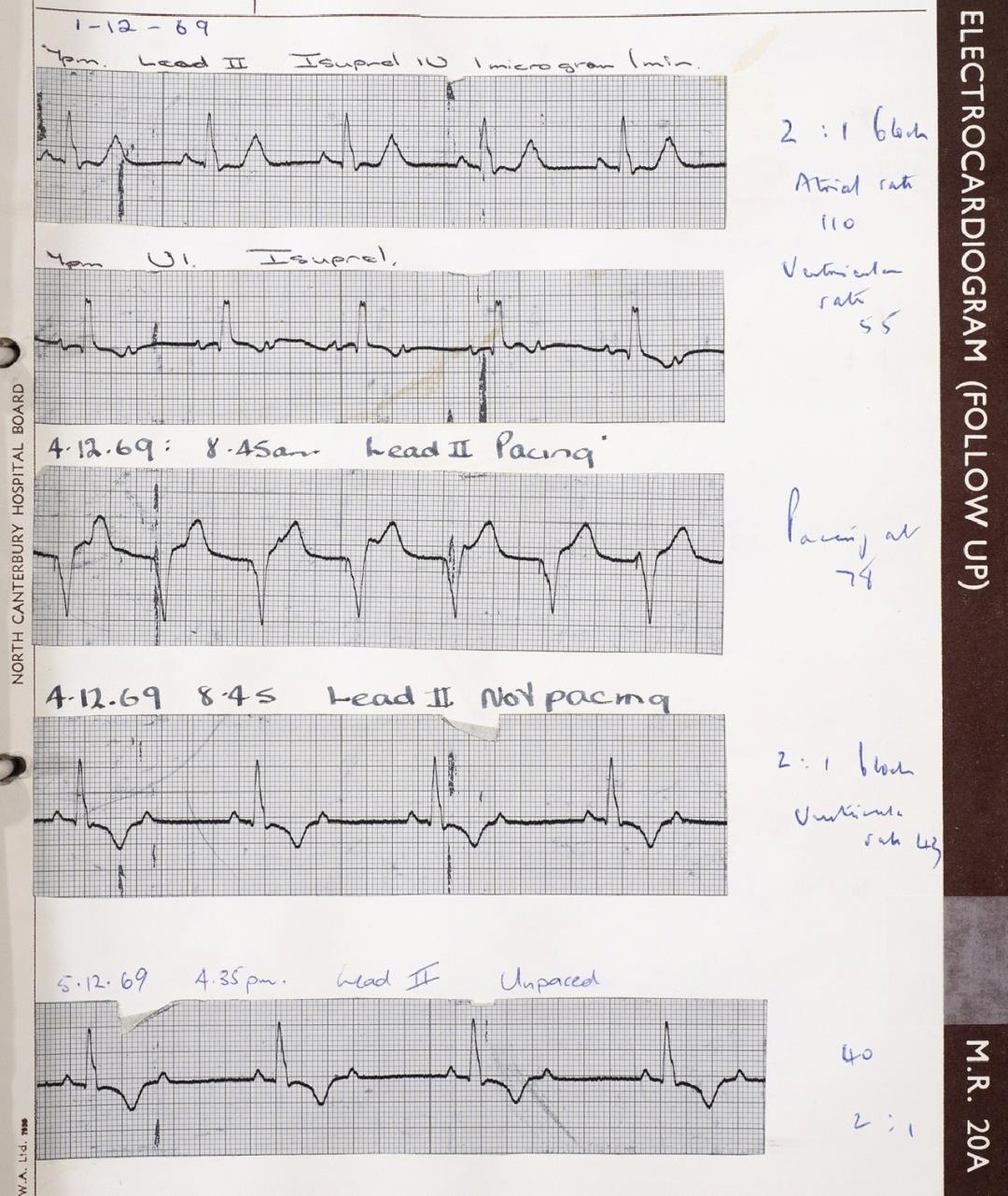
Figure 1. Patient’s ECG
The patient’s conduction block has not recovered after 19 days of medication and temporary pacing. On December 18th, 1969, a single-chamber Teletronics P6 pacemaker (the first one) powered by a non-programmable mercury-zinc battery was implanted through the right external jugular vein (Figure 2). Three days later, the electrode was reset due to continuous chest stimulation. After opening the pouch, it was found that the nylon fixing screw was not inserted deep enough, which led to a short circuit of the battery. Clean the fixing hole and fill it with piston grease, then reinsert the electrode and finally cover it with silicone sealant.
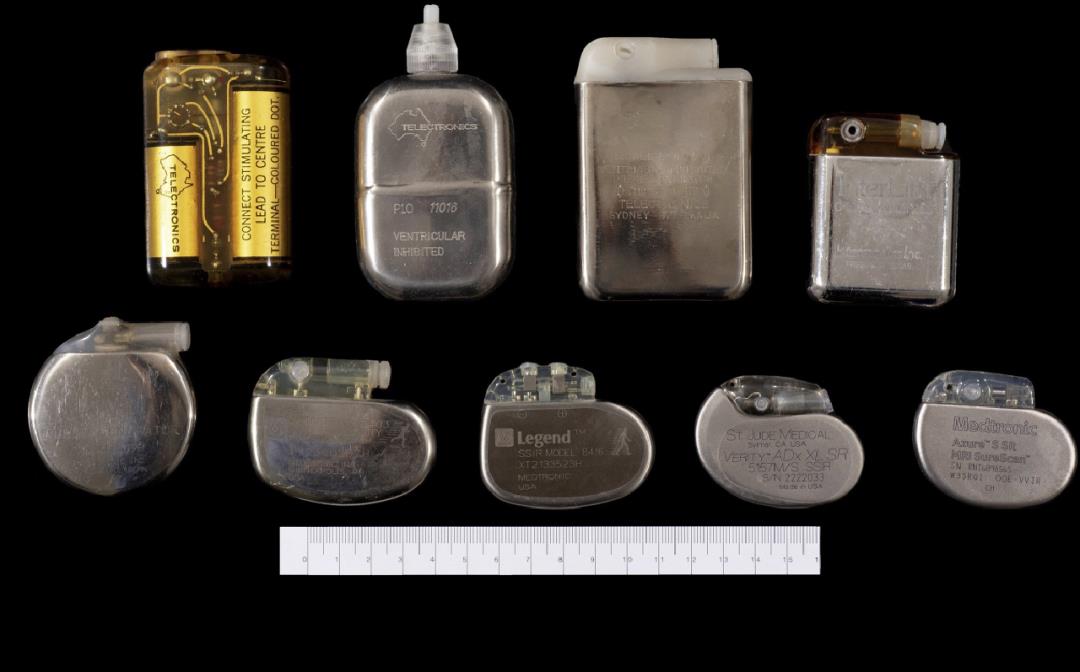
Figure 2. Ten pacemakers implanted and replaced by patients. From left to right, from top to bottom. Teletronics P6 (1969), Teletronics P10 (1972 & 1974), Teletronics 120b (1976), Intermedics 223-01 (1980), Medtronic Mirel VL (1980), Medtronic Activatracx VVI+ (1986), Medtronic Legend 8416 (1995), Verity ADX 5156 (2008) in San Yuda, and Medtronic Azure SR (2021).
Teletronics P6 is developed by an Australian company, and can be implanted intravenously, without opening the chest to pace the epicardium. Teletronics P6 pacemaker is not sealed yet, and it will not be sealed until P8.
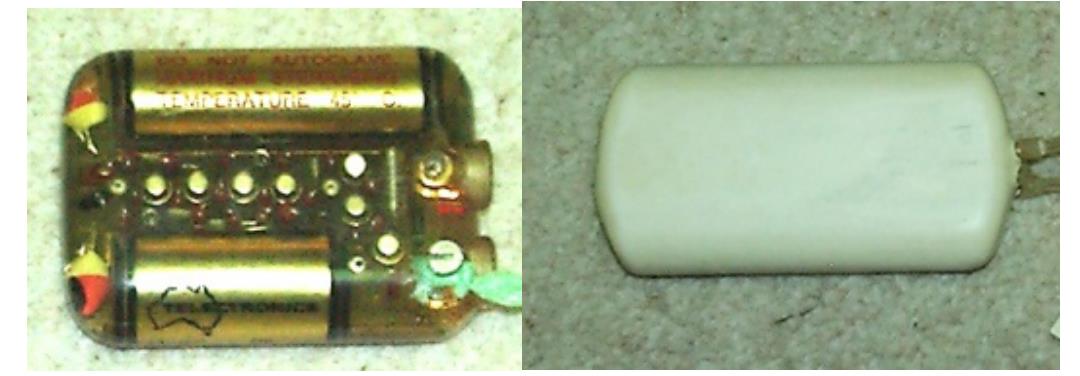
Teletronics P6 Pacemaker
In February 1972 (2 years and 2 months after the first implant), the battery of pacemaker was exhausted and replaced with Teletronics P10 (Figure 2).
In September, 1974 (2 years and 7 months after the second implantation), the battery was exhausted again, and manual removal of the lead was attempted, but the adhesion between the original electrode and the tricuspid valve ring was seriously unsuccessful. Teletronics PY3620/60 unipolar pacing lead and Teletronics P10 pacemaker were implanted through the right internal jugular vein (Figure 2).
In March 1976 (one year and six months after the third implant), the battery was exhausted and replaced with Teletronics 120B pacemaker (Figure 2).
In early May 1980 (4 years and 2 months after the fourth device was implanted), the battery was exhausted and replaced with Intermedics 223-01 pacemaker (Figure 2).
Ten days after the replacement of the fourth pacemaker, the patient developed bradycardia. ECG showed ventricular arrest, ventricular tachycardia and ventricular fibrillation. Temporary pacemaker was implanted, and Medtronic BP 6962-65 bipolar pacing lead and programmable Medtronic Mirel VL pacemaker were implanted from the left external jugular vein three days later (10 days after the fifth implantation) (Figure 2). Teletronics PY3620/60 electrode located on the right side cannot be pulled out manually, and it is embedded and fixed on the right chest wall.
In August, 1986 (6 years and 3 months after the implantation of the sixth set), the outpatient electrocardiogram indicated that the pacemaker could not be seized, so the electrode implantation and pacemaker replacement were carried out in emergency. Medtronic Bipolar 4012 Bipolar Electrode Lead and Medtronic Activatrax Pacemaker (Figure 2) were implanted through the left cephalic vein. This pacemaker is the first commercially available frequency response pacemaker.
In February, 1989 (2 years and 5 months after the replacement of the sixth set), one of the partially removed right pacing electrodes eroded the muscles of the chest wall and was surgically trimmed. Subsequently, chronic right capsular infection occurred, which required long-term drainage and drug treatment.
In June, 1995, the prompt of pacemaker replacement was detected during routine follow-up, and Medtronic Activitrax was replaced by Medtronic Legend 8416 (6 years and 4 months after the seventh replacement).
In 2008 (13 years after the eighth battery was replaced), the battery was exhausted and replaced with the Verity ADX 5156 pacemaker in San Yuda. During the operation, it was found that the electrode had obvious insulation rupture, and it was repaired with joint kit.
In October 2021 (13 years after the ninth replacement), the pacemaker battery was exhausted again. Considering that the electrode had been used for 36 years, it was decided that the electrode also needed to be reset. After the right capsular bag was dried, Medtronic 5076 electrode and Medtronic Azure single-chamber pacemaker were implanted through the right cephalic vein (Figure 4).
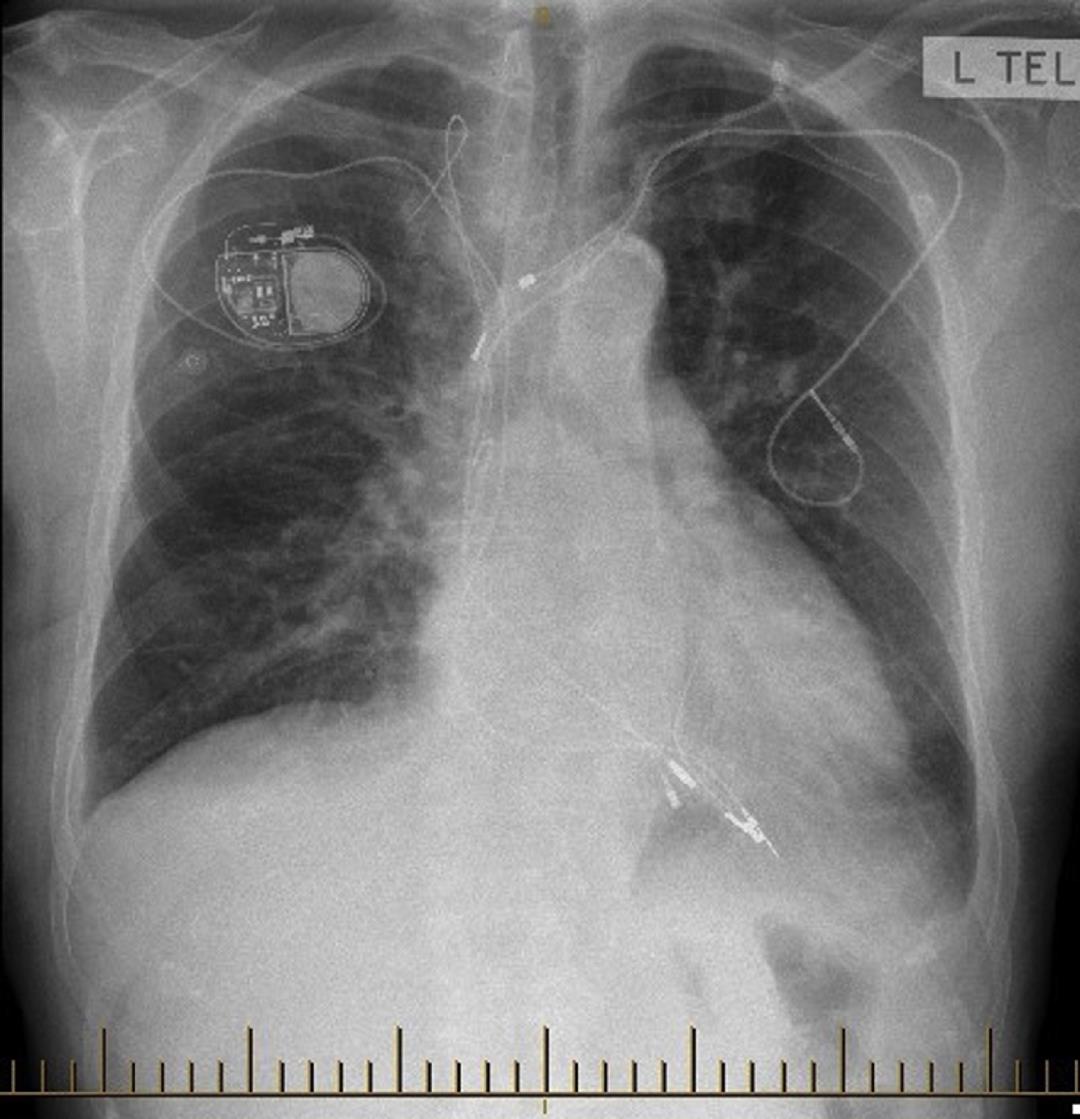
Fig. 4. Chest radiograph (5 electrodes in the body) after the 10th pacemaker implantation in October, 2021.
[opinion]
On October 8, 1958, the first rechargeable pacemaker developed by Rune Elmquist was implanted by Dr. Ake Senning in Sweden. In the following 43 years, Arne Larsson replaced 22 pacemakers and reset the electrodes five times. Pacemakers began to be commercialized in 1961, and the Guinness World Record for the longest single service life was 37 years and 281 days.
This patient who has been pacing for 53 years should be the longest reported so far. Over half a century, 10 pacemakers and 5 pacing electrodes were implanted and replaced, which witnessed the development history of most pacemakers. Although many electrodes remained in the body and suffered from capsular infection, they lived from 36 to 89 years old, which is the benefit brought by scientific and technological innovation. I also have a patient who was implanted with a dual-chamber pacemaker at the age of 86 because of repeated syncope due to third-degree atrioventricular block. Now he is 101 years old.
Pacemaker research and development is mainly with the progress of battery, software and hardware technology, and now it has entered the era of no wires. However, in the initial stage, it was seriously challenged. For example, the initial implantation required open chest surgery to implant epicardial leads, which were often unstable. In 1958, the first fully implanted pacemaker failed 8 hours after operation; The perioperative mortality rate is as high as 10%; Pacemaker failures are common; Mercury-Zinc battery-powered pacemakers can only be used for up to 24 months; The one-year mortality rate of patients with pacemaker implantation was as high as 20%.
The technical development in 1960s and 1970s improved the above situation, and the most important thing was the introduction of lithium batteries, which greatly extended the service life and reliability of pacemakers. In the first 20 years, the patient underwent 11 acute interventions due to sudden battery exhaustion or acute electrode failure, but only 3 selective interventions in the last 33 years.
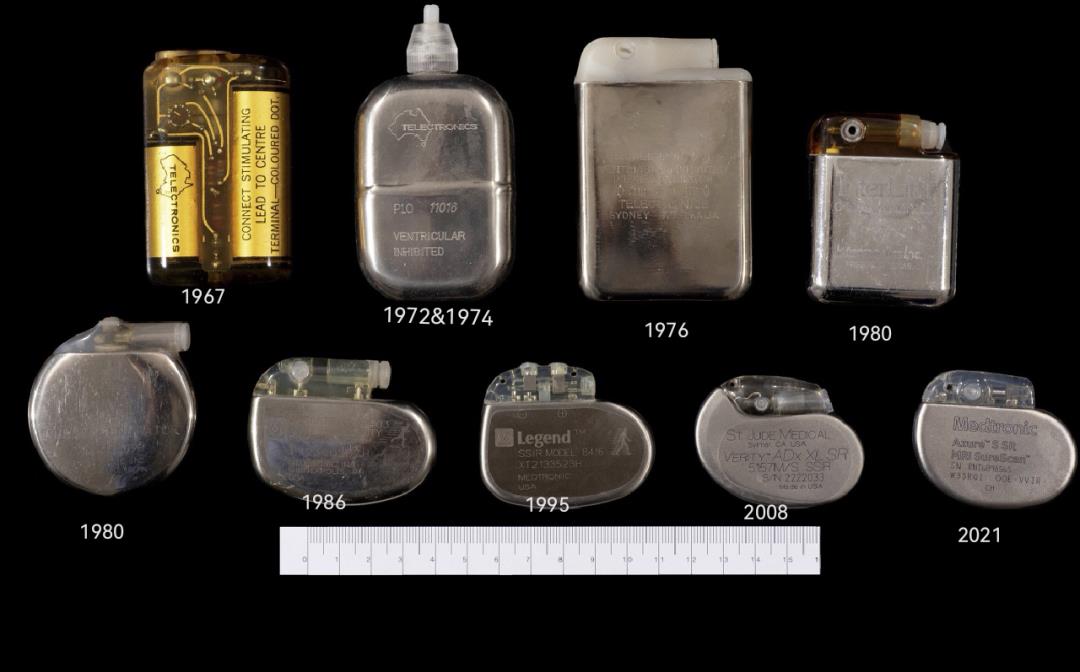
In fact, in addition to technological progress, we need to thank the early patients who are willing to try, because they are faced with great uncertainty. Including the recent first case of pig heart transplantation, medical history should remember the names of these volunteers!
Brief introduction of the author
Cheng Zhenfeng
Huzhou Central Hospital, Zhejiang Province

Cheng Zhenfeng, chief physician, master tutor, chief expert of Huzhou Health and Health Commission, chief expert of cardiology department of Huzhou Central Hospital, fifth-stage student of CCI, member of China Atrial Fibrillation Center Alliance Committee, verification expert of China Chest Pain Center, expert of China Hypertension Compliance Center Certification Committee, young editorial board member of China Intervening Cardiology Journal, member of CTO old buddy, founded "Morning Reading of Zhenfeng" in 2017, and has published more than 1,200 articles so far.
Current planning: Shen Li
Author of this article: Cheng Zhenfeng
post production: Ling Wujuan
关于作者